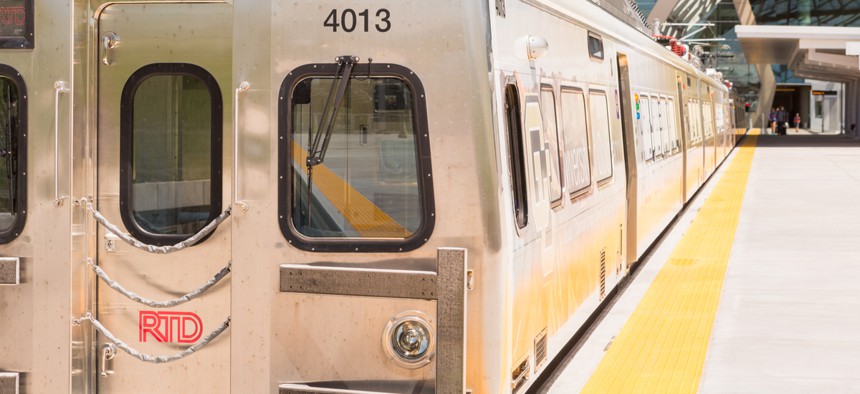Transit Agency Seeks to End Its Use of an Especially Lonely Job Post

The Denver Regional Transit District's A Line connects Union Station with Denver International Airport. Shutterstock

Connecting state and local government leaders
Since Denver’s airport commuter rail line opened two years ago, problems with wireless technology prompted the use of human backups.
DENVER — During a recent Monday afternoon headed into the evening rush hour, the Regional Transit District’s A Line commuter train was fairly full upon its departure from Denver Union Station en route to the city’s international airport, 23 miles northeast of downtown. Leaving every 15 minutes during most of the day, the service is a handy way for locals or visitors traveling between the city’s international gateway and the central business district, now anchored by a revitalized transit hub at Union Station.
Instead of paying upwards of $70 to take a cab to and from the airport, $9 will cover the cost of a one-way, 37-minute trip.
While much of the route is grade separated, there are still 11 spots where the tracks cross surface streets, which necessitates the use of crossing gates and signals. And it’s those crossings that have caused a lot of heartburn for transit officials in Denver since A Line service launched in April 2016.
After problems with the wireless technology that controls the crossings gates, RTD has been operating the A Line under a federal waiver and with a crew of human flaggers, who stand at the crossings to ensure that traffic stops in case the gates don’t operate properly. They’re hard to miss as trains pass through track crossings.
In October, Westword, an alt-weekly in Denver, named the RTD flaggers as one of the 10 most-lonely professions in the Mile High City:
“You’ve probably seen these folks, wearing their vests in their cozy little houses along the crossings, sitting in a folding chair and waiting to…well, stand up and wave that stop sign.”
Using those human flaggers as a fail safe hasn’t come cheap. RTD has spent tens of millions of dollars to pay the flaggers and is seeking state and federal approval to stop using them.
During a hearing of the Colorado Public Utilities Commission on Thursday, transportation experts testified that the flaggers add very little to the A Line’s safety, according to The Denver Post.
“It would be very hard to come up with any safety benefit of those flaggers,” Clifford Eby, a former Federal Railroad Administration deputy administrator who works as a consultant for Denver Transit Partners, a RTD contractor.
In the meantime, the flaggers remain at their posts.
Michael Grass is Executive Editor of Government Executive’s Route Fifty and is based in Seattle.

NEXT STORY: Welcome Robot Overlords! Now We Can Get Some Real Work Done.





